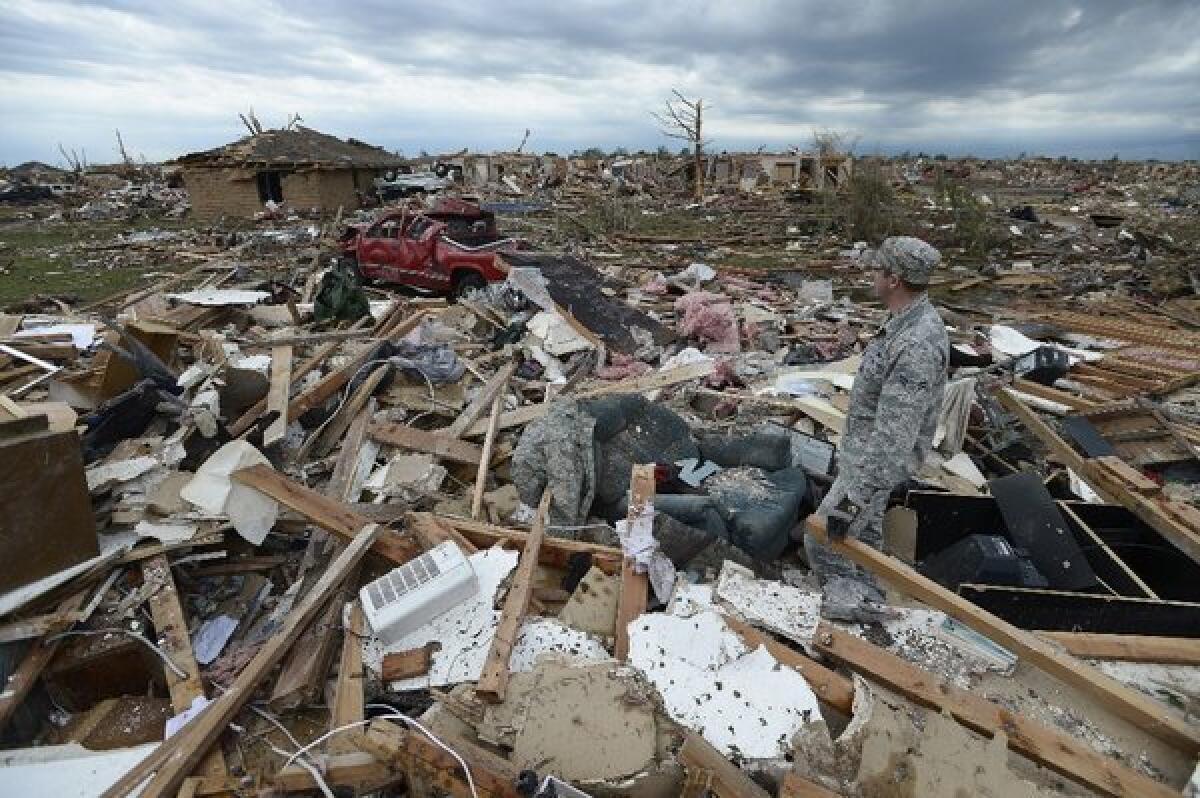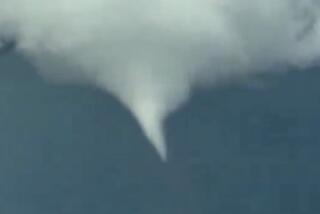Oklahoma tornado is a standout, storm scientist says

A tornado researcher at the University of Alabama at Huntsville couldn’t believe it when he heard Monday that a devastating twister was headed toward Moore, Okla.
“One of my graduate students came in my office yesterday and said, ‘Moore is about to be hit again,’ ” Kevin Knupp said. “I said, what?”
Monday’s devastating storm was the third major tornado to strike the town since 1999. But Knupp, whose work focuses on how external influences like features on the ground systems contribute to tornado formation, said that scientists don’t know yet whether the Oklahoma City suburb’s string of storm hits was random or a result of circumstances particular to the area.
“It stands out, and we don’t know if it’s luck of the draw or if there’s something physical or systematic going on,” he said. “I think with time we’ll have a better understanding.” He said that scientists may explore the question by building computer models that can simulate the conditions on the ground Monday in Moore.
Knupp said that he and his graduate student watched the tornado in real time, tracking its path using radar. He said he thought that another dissipating storm in the area may have influenced the megatwister’s formation, creating a surge in momentum in low-level air that might have contributed to the circulation of the larger storm.
“It’s a case we can add to our list where the external influences seem to be prominent,” he said.
The pair measured the width of the tornado’s circulation at about 2 miles wide, and their radar readings indicated that debris was scattered across a path at least that broad. Early reports have estimated the storm’s strength rating at an EF4 level. Knupp said he thought the tornado might be upgraded to an EF5 -- the most powerful rating a tornado can receive -- once scientists get a closer look at the damage on the ground.
He said that tornado researchers in Oklahoma would want to get started on aerial and ground-based damage surveys as soon as they could, to get the most accurate reading possible of the storm’s track and impact. But since it was cloudy Tuesday morning, they might not yet have been able to get out in the field, he added.
He said he thought a local weatherman’s suggestion that the twister was “the worst in the history of the world” was probably tinged by the intense emotions of the day.
“There are various ways to make that evaluation,” Knupp said. “But while the tornado was intense and wide, it was about as bad as it gets. I can’t dispute that.”







